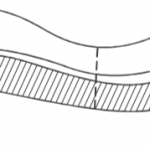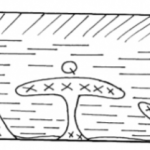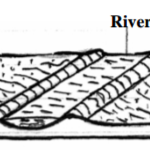KNEC KCSE Geography Paper 1 Question Paper / 2015 KCSE Kirinyaga West
2015 KCSE Kirinyaga West
Geography Paper 1
SECTION A (25 Marks)
Answer all questions in section A.
(a) What is physical enviroment? (2mks)
(b) State three reasons why it is important to study Geography (3mks)
5 marks
(a) Describe the characteristics of the following layers of the earth’s structure
(i) Lithosphere (crust) (3mks)
(ii) The core (3mks)
6 marks
(a) What is a lake? (2mks)
(b) State three reasons as to why Lake Naivasha as a fresh water lake (3mks)
5 marks
(a) What is faulting ? (2mks)
(b) Name three features formed through faulting (3mks )
5 marks
(a). The table below shows temperature and rainfall figures for Transtein , Germany .
Use it to answer the questionsthat follows.
(a) Calculate the annual range of temperature (1mks)
(b) Describe the climate of the above station (3mks)
4 marks
SECTION B (75 Marks)
Answer question 6 and any other two questions in this section
Study the map of Migwani 1:50.00 ( sheet 151/1) provided and answer the following questions .
(a) (i)Give the latitudinal extent of the area covered by the map (2mks)
(ii)Name two symbols used to represent relief in the area covered by the map (2mks)
(iii)What is the name of the physical feature found at grid reference 035830 (1mk)
(b) (i) Draw a rectangle measuring 12cm by 16cm to enclose the area within Easting 06 to Easting 12 and Northing 63 to Northing 71 (1mk)
(ii) On the rectangle you have drawn mark and Name the following
− Steep sloping areas
− Water pipe line
– River Ikoo (3mks)
(c) (i) Measure the Length of dry weather road from grid reference 088706 to grid reference 122763 . Present your answer in Metres (2mks)
(ii) Describe the relief of the area covered by the map (5mks)
(d) Citing evidence from the map give two functions of Mutito Township (4mks)
(d) Describe the drainage of the area covered by the map (5mks)
4 marks
(a) (i) What is a rock? (2mks)
(ii) Give two types of Intrusive Igneous rocks (2mks)
(iii) State threecharacteristics of sedimentary rocks (3mks)
(b) The table below shows some original rocks
Name their metamorphic equivalent (4mks
(Origina rock) Metamorphic
Granite ……………………………………….
Sandstone ……………………………………….
Clay ……………………………………….
Limestone ……………………………………….
(c) Describe three ways through which original rocks turns into metamorphic rocks (6mks)
(d) You are supposed to carry out a field study on rocks around your school
(i) Give two methods of data collection you would use (2mks)
(ii) State two objectives of your study (2 mks)
(iii) Give reasons as to why it would be necessary to carry a geological hamme (1mk)
(v) State three problems you are likely to encounter in the course of the field study (3mks)
25 marks
(a) (i) What is a fault? (2mks)
(ii) Name tworift systems in Africa (2mks)
(b) With the aid of a well labelled diagrams,describe how the rift valley was formed through compressional
forces (8mks)
(c). (i)Name three features associated with folding (3mks)
(ii)Explain the significance of faulting (10mks)
25 marks
(a) What is mass wasting? (2mks)
(i) Explain three factors which influence the rate of movement of weathered materials down the slope
(6mks)
(ii)State four effects of soil creep (4mks)
(b) Explain three effects of landslides (6mks)
(c) Students from Yembo Secondary School carried out a field study in an area which had experiences a landslide
(i)State two reasons for seeking permisssion (2mks)
(ii)Give two methods of data recording they could have used (2mks)
(iii)Highlight three follow-up activities they could have engaged themselves in after the study (3mks)
25 marks
(a) Give three sources of groundwater (3mks)
(i) What is a water-table (1mk)
(ii) The diagram below shows zones of groundwater.
Name the parts marked A, B, C and D (4mks)
(b) State three conditions which are ideal for formation of Artesian wells (3mks)
(c) (i) Name three surface features found in
Limestone areas (3mks)
(ii) Give the main reason why limestone areas have no surface drainage (1mk)
(d) (i) Describe how limestone pillars are formed (6mks)
(ii) Explain the significance of resultant features in Limestone areas (4mks)
25 marks








